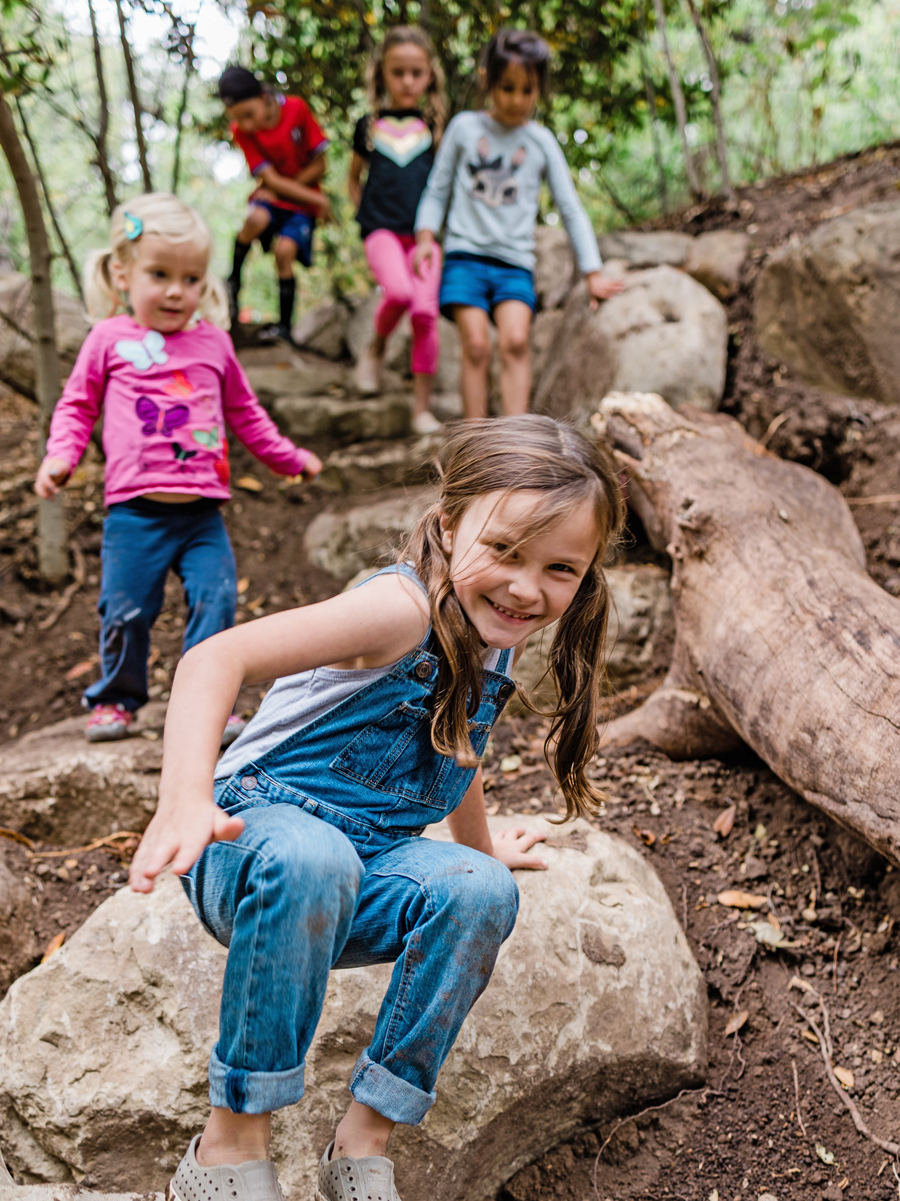SB BOTANIC GARDEN’S NEW “BACKCOUNTRY” OPENS
**Events may have been canceled or postponed. Please contact the venue to confirm the event.
Date & Time
Mon, Jun 06 10:00 AM - 5:00 PM
Address (map)
1212 Mission Canyon Road, Santa Barbara, CA 93105
Venue (website)
S.B. Botanic Garden
Kids (and the young at heart) are encouraged to explore nature in and enjoy “unstructured play” in Santa Barbara Botanic Garden’s new Backcountry play area which opens to the public on Monday, June 6 at 10 a.m.
The 4.5-acre garden has been specially designed for all visitors, but particularly ages five to 13, to pursue nature play – climb on fallen trees, rock-hop, build forts out of natural materials, discover unique “Casita” playhouses, navigate a maze, and more.
The project budget of $4 million has been raised through donations from the community, which includes an endowment of $2.5 million to ensure staffing and upkeep in perpetuity. Donations are still being accepted to continue its evolution. Conceptual design for Backcountry was developed by True Nature Design. Brightview Landscape Services, in partnership with Biohabitats, brought that plan to fruition through a two-year design/build process.
Nature educators called “Backcountry Rangers” are on site to ensure safety and maintain the garden. Though the Rangers are available to help guide the visitor experience, the Backcountry provides a space for self-directed nature exploration and play, which is lacking in many children’s lives.
“Even before the pandemic, but certainly now, children spend too much of their lives indoors looking at screens and devices, or at best their outdoor time is limited to organized sports,” said Garden Executive Director Steve Windhager, Ph.D. “The Backcountry gives them the opportunity to safely engage in unstructured play and exploration in nature. Our goal is to spark a lifelong connection with nature, and inspire the next generation of conservationists.”
With the opening of the Backcountry, the Garden also unveils its new brand on June 9 celebrating conservation at the heart of its work. The brand rollout includes a new visual identity, website, and communications strategies that can be seen across newsletters, social media, and events.
“Visually, it gives the Garden a more consistent look that is rooted in our historic design details,” says Windhager, “while it also conveys the reason the Garden exists – to promote the conservation of native plants.”
Backcountry is located adjacent to portions of the former Canyon Trail which parallels Mission Creek, with new areas created in spaces previously underutilized and largely abandoned since before the 2009 Jesusita Fire. The main pathway is accessible to strollers, while secondary trails are designed for children to use agility, balance, and coordination to build a sense of independence. At least 15 inches of fall-safe mulch is distributed to cushion beneath any climbing feature more than two-and-a-half-feet tall.
Natural features, including fallen trees and boulders, were incorporated into the landscape, and 28 truckloads of additional boulders were brought in from the drainage basins filled by the 2018 Montecito debris flow. Fallen trees in the Garden were utilized and many others donated by local horticulture partners. Some trees damaged in the Jesusita fire were removed, and additional California-native trees, shrubs, and foliage have been planted. Landscaping will resume this fall when conditions are best suited for planting native species.
Five Backcountry Casitas, temporary outdoor playhouses built of natural materials, are scattered throughout the new garden. Selected through a design competition, each Casita creatively incorporates natural materials to provide unique perspectives of nature. Children can pretend to be bees while climbing on and through a human-scaled pollinator home, for example, or take a break to enjoy nature-themed books in the “The Hawk’s Nest.”
Explore the Backcountry
Backcountry is accessed from several places, but the main trailhead is located in Sycamore Grove, near the Campbell Bridge. Other entry and exit points are located at the Upper and Lower Rock Crossings.
From the trailhead, the main trail meanders under a canopy of coast oaks, California bay laurels, sycamores, and other native plants. Boulders and tree rounds provide obstacle course-type play near the entrance, and further along there is a Fallen Forest of logs, anchored by ropes, for climbing. Another area features boards and logs which can be flipped over to view the critters living underneath. The Garden’s Maze, previously developed with the Garden Club of Santa Barbara, is integrated into Backcountry.
Basecamp is located in a sunny meadow where kids can “park” their parents in shaded seating and go adventuring – while staying within earshot. Benches and chairs, a picnic table, rustic tent, and the Backcountry Ranger Station are here, and a compositing bathroom will be added later this summer (porta potties are temporarily available). Not far away, the Lower Rock Crossing connects to the gardens on the other side of Mission Creek. Sycamore saplings planted in a circle will grow into a “living room.”
The highest point in Backcountry, the Raptor’s Perch is a short hike from Basecamp alongside portions of the historical Mission Aqueduct. This “perch” has Casita nestled between two large Bishop pines. Nearby, kids can clamor over large boulders.
Quail Grove is a relaxed space adjacent to Mission Creek where boulders, leaf litter, woody debris, and other natural play elements can be used to build forts or create natural art. Visitors can return back through the Backcountry or use the Lower Rock Crossing, another Backcountry entry and exit point.

